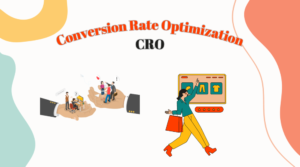What Changing Your URL Does to SEO
When you start thinking about updating your website, you might consider changing your URL.
Changing a URL is easy enough in itself, but not everyone realizes that making this move can have repercussions you wouldn’t expect, including effects on SEO.
Changing a URL can result in a fluctuation in your pages’ ranks, but if you take the correct steps, you can lessen the impact on your search result standings.
For example, let’s say you want to optimize your dentistry practice’s website, changing your URL could really give it the boost it needs rank in the eyes of Google.
Follow these steps to get ahead of the game!
When Is It Practical to Change Your URL?
Because changing your URL can have such a drastic impact on your SEO, it’s best to keep it as-is if possible, even when updating other aspects of the site.
There are situations when you have no choice but to change your URL, though:
- When you make the move from HTTP to HTTPS for security reason
- When you change your domain name
- When you want to optimize your URL path to improve SEO
No matter what your motivation for changing your URL might be, you should take the time to understand how it’ll affect your SEO efforts.
Why Does Changing Your URL Affect SEO?
When you change your URL, Google must recrawl your new URL and content to determine the authority of your pages.
If you have a large site with many URLs, this could take quite some time, and while you wait, your rankings could take a hit.
Unfortunately, the hit could end up being a major one, even one that pushes a page down several pages.
Of course, that means less visibility, fewer site visitors, fewer leads, and fewer conversions.
This can equate to a significant loss if you’ve invested time and money to get your site high on the first page of the search results only to have it driven all the way to page ten, where, let’s face it, it will never be seen.
Luckily, it is possible to mitigate this damage and avoid losing all your SEO work.
The way to do this is to transfer the link juice from one page to another, and that requires careful planning.
Search Engines
A search engine is a software system that is designed to carry out web searches. They search the World Wide Web in a systematic way for particular information specified in a textual web search query.
The search results are generally presented in a line of results, often referred to as search engine results pages (SERPs).
The information may be a mix of links to web pages, images, videos, infographics, articles, research papers, and other types of files. Some search engines also mine data available in databases or open directories.
Unlike web directories, which are maintained only by human editors, search engines also maintain real-time information by running an algorithm on a web crawler.
Internet content that is not capable of being searched by a web search engine is generally described as the deep web.
You want to make your URL as appealing as possible in order for search engines to decipher the meaning and give you a better
Top Level Domain
One thing they point out is that using a top level domain (TLD) is usually your best bet. This simply means that it’s ideal to use a “.com” domain rather than “.biz,” “.pro,” “.tel,” etc.
You’re not necessarily doomed if you use anything other than “.com” for your domain. In fact, TLD doesn’t directly impact rankings.
But what it does tend to do is increase trust for human users.
SEO Friendly URLS
There is a correlation between user-friendliness and overall SEO. They’re intertwined.
And this is most definitely true when it comes to URL optimization.
Or as Moz puts it, “A well-crafted URL provides both humans and search engines with an easy-to-understand indication of what the destination page will be about.”
You should strive to structure your URLs for maximum readability. While dynamic urls are important, creating SEO friendly URLS will ensure SEO success.
You also dont want your website URL to be a dissertation. Your website URL length should only be a few words.
Creating urls isn’t rocket science but there are a few URL parameters that need to be met for it to be a good.
SEO Friendly URL Structure Tips
Use Hyphens Instead of Underscores
When it comes to putting spaces between words, you have two main choices:
- Hyphens
- Underscores
Your URL structure is really important. So what’s the best choice? Google prefers hyphens over underscores.
Using hyphens to separate words in URL phrases is important to both user readability and SEO.
Google recommends using hyphens (-) instead of underscores (_) in URLs because hyphens are treated as spaces between words, while words connected by underscores are viewed as one word. Gotta give Google what it wants!
Use Lowercase Letters
Do not use capital letters in your URLs. Search engines can decipher from uppercase and lowercase letters in URLs, which can lead to duplicate URLs and loss of page rank.
Always stick with lowercase letters. Using uppercase letters can potentially lead to redirects or 404 errors on certain servers.
URL Structure
Keep Most of Your Content
This is a huge SEO friendly tip. If you have created content that ranked well in Google and other search engines, now is not the time to reinvent the wheel.
This is useful to keep your page content high on search engine rankings.
Google’s algorithm has deemed your content to fit the search intent of the keyword you’re trying to rank for.
Your best bet for holding on to that ranking is to keep if not all, then most—90 percent—of that high-ranking content the same.
301 Redirects
301 Redirects tell Google that you are permanently moving a page from one URL to another.
It also helps you pass on your link juice to the new page. Before you make the switch to the new URL, make a list of where each old URL will be going.
This is one of the most important steps you can take to make sure you don’t lose the rankings you’ve worked to achieve.
Create a New Property on Google Search Console (GSC)
Whether you are moving from HTTP to HTTPS or changing your website’s domain name, you will need to take this step. Your new properties are where you will need to submit your updated sitemaps.
Update Your Sitemap
Even if you deploy your 301 Redirects, Google will still need to crawl your new URLs. The more URLs you have on your site, the longer this process will take.
Check the New Domain’s History
Before you adopt a new domain, it’s important to check to see if the old links has any previous Google violations attached to it.
You will also want to research whether there are detrimental back links attached to the URL.
You should take steps to resolve any issues you discover before taking on the new URL so they don’t hinder your ranking.
Some non technical aspects that could also help are having a good meta description. A good page URL is great but a good meta description will entice users to click on your site.
Good URLs with a descriptions are a great example of how to boost SEO.
A Keyword in URLs??
While they do give weight to the authority of the overall domain itself, keyword use in URLs can be beneficial.
While using URLs that includes keywords can improve the search visibility of your website, URLs themselves generally do not have a major impact on a page’s ability to rank.
Will a Keyword in My URLs Help my Ranking?
The clear answer to whether a keyword in the URLs of your website is used for ranking is yes.
Approach Keyword in Urls Like a User
User friendly urls will always take the cake. Dynamic urls that utilize good url structure and relevant keyword use will get you very far.
Keyword rich content is great to have in the content under page titles.
A Keyword in the Domain
An SEO friendly url in the search results can rank higher in search engines if there is a keyword in the domain.
A Keyword in the URL Should Be Included
It is a best practice to optimize every web page around one keyword, and this keyword should be included in the URL.
It is also important to put the most important keywords in the beginning of the URL, as search engine spiders do not give as much significance to words toward the end of a URL.
Remember though, do not overuse keywords.
Search engines recognize keyword stuffing and will penalize your website for those actions.
Conclusion
As you can see, changing your URLs into dynamic URLs helps SEO tremendously.
Creating URLs that are keyword rich, SEO friendly, has a great url structure by using lowercase letters, separate words, allows both users and you to benefit.
In other words, all the tips shared in this post will get you very far.




